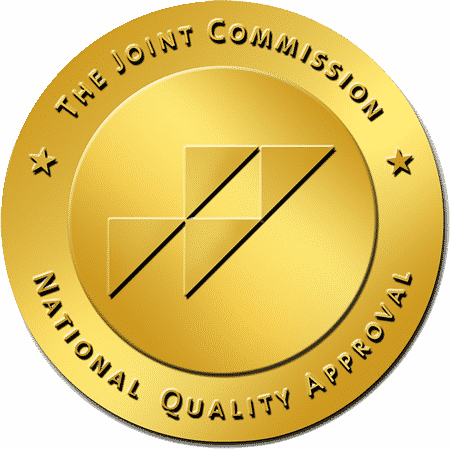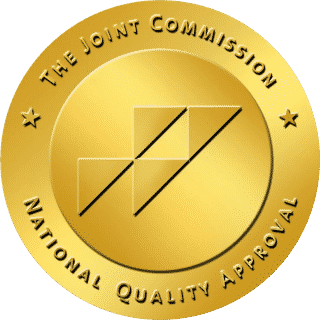In much of today’s world, drinking alcohol is considered normal. People drink alcohol for a variety of reasons. Some drink because they enjoy the taste of a favorite beer, liquor, or mixed drink. Some people regularly drink alcohol “to be social,” especially during family celebrations such as weddings and anniversaries.
Many people drink because it makes them feel better or to forget about problems that are causing them stress. In the extreme, they may drink to excess and become drunk. Binge drinking on college campuses occasionally ends with serious complications–such as alcohol induced liver injury–or death.
Whatever the reason for excess alcohol intake, those with an alcohol use disorder often cannot stop after the first drink. Some drink to excess because their physical body and psychological mind set craves more and more alcohol and alcohol abuse is the result.
Whatever the reason, excessive alcohol intake has serious negative impacts on a person’s physical and mental health. Too much alcohol negatively impacts not just their health but also their lives and the lives of people close to them.
Alcoholism
Alcoholism, the most serious type of alcohol abuse, is characterized by an inability to control drinking patterns. Alcoholism is also known as alcohol use disorder (AUD), which is the ongoing excessive or compulsive consumption of heavy drinking. There are several levels of alcohol abuse that determine an alcohol use disorder–mild, moderate, or severe– and every level has a unique set of symptoms and potential negative effects.
Sadly, any form of alcohol abuse can spiral out-of-control if left untreated. Alcoholics are unable to function normally without alcohol. Excessive alcohol intake can cost them employment, friendships, and family. Most importantly, it can endanger your health and your life.
Consistent alcohol misuse over time and can lead to harmful problems such as alcoholic-related liver disease (ARLD).
Alcohol-Related Liver Disease
Alcohol-related liver disease (ARLD) is the medical term for liver damage and impaired liver function brought on by excessive alcohol consumption over a long period. The liver can become damaged, swollen, and inflamed, and may stop functioning. The liver is a very important organ, so liver failure is dangerous. Alcoholic liver disease can lead to the need for a liver transplant, without which death may result.
Liver Transplant
When a person stops drinking alcohol and alcoholic liver disease does not improve, a liver transplant may be an option. Liver transplants are rare and the procedure takes a toll on the body. The recuperation time is significant.
A person is only considered for a liver transplant if there have been complications of alcoholic liver disease and the person has stopped drinking.
A liver transplant will require the recipient to not drink alcohol while awaiting the liver transplant. Once a liver transplant is completed the recipient cannot drink for the rest of their life.
Liver transplantation for alcoholic liver disease is only considered in people who have completely avoided alcohol for six months.
What is Nonalcoholic Fatty Liver Disease?
People who drink little or no alcohol can have nonalcoholic fatty liver disease (NAFLD), a variety of liver conditions in which excess fat is stored in liver cells.
NAFLD is the most common form of chronic liver disease in the U.S, affecting about 25 percent of the population.
Some people with NAFLD can develop an aggressive form of the disease which causes liver inflammation and may lead to cirrhosis and liver failure.
Stages of Alcohol-Related Liver Disease
Fatty Liver Disease
Fatty liver, also known as steatosis, is the initial stage of alcoholic liver disease. Alcoholic fatty liver disease is defined by an abundance of fats within the liver, which harms the liver’s functionality. At this point, stopping drinking alcohol immediately is the best course of action. Damage from the liver disease can be naturally repaired and the liver can return to its normal and healthy function. Fatty liver disease rarely has noticeable symptoms, so many people are not aware that they have a problem until they progress to the next stage of alcoholic liver disease.
Alcoholic Hepatitis
Alcoholic hepatitis is the second stage of alcohol-related liver disease. It causes inflammation, liver cell aging, and fibrosis, the overgrowth of scar tissue in the liver. Similar to fatty liver disease, the damage from alcoholic hepatitis can be repaired and healed if one can stop drinking alcohol and give the liver time to heal. As a result, it is crucial that the person stop drinking as soon as they are diagnosed with alcoholic hepatitis. Forty percent of cases of severe alcoholic hepatitis proceed into the next stage of alcoholic liver disease and about 50 percent of severe cases are fatal.
Alcoholic Cirrhosis
The most severe and final stage alcoholic liver disease is alcoholic liver cirrhosis. The liver develops permanent scar tissue, which impairs normal liver function and may result in end-stage liver disease and liver failure.
The histology of end-stage alcoholic cirrhosis, in the absence of acute alcoholic hepatitis, resembles that of advanced liver disease from many other causes, without any distinct pathologic findings
Alcoholic Liver Cirrhosis
Alcoholic cirrhosis or alcoholic liver cirrhosis is an advanced stage of alcoholic liver disease in which the normal liver tissue is destroyed and replaced with scar tissue as a result of heavy and consistent alcohol consumption. The liver is a vital organ because it purifies the blood of toxins, disintegrates proteins, and produces bile to aid in the body’s absorption of fats.
When you drink alcohol excessively over a long period, it damages your liver’s healthy tissue, which your body will begin to replace with scar tissue. The worst part is that the scar tissue will remain and fill up your liver permanently, preventing it from functioning properly.
Symptoms of Alcoholic Liver Cirrhosis
The symptoms of alcoholic liver cirrhosis can be very similar to those of fatty liver disease and alcoholic hepatitis. These symptoms include jaundice, itchy skin, and portal hypertension (high blood pressure in the vein that runs through the liver). Because alcoholic cirrhosis is the last stage of alcohol-related liver disease, there are additional overt symptoms that can be distressing, such as:
- Fatigue
- Loss of appetite
- Nausea
- Swelling in your legs, feet, or ankles
- Easy bleeding or bruising in any part of your body
- Sudden weight loss
- Itchy skin
- Visible spider-like blood vessels on your skin
- Yellow discoloration in the skin and eyes
- Fluid accumulation in your abdomen
- Redness in the palms of the hands
- Absent or loss of menstrual periods not related to menopause
- Loss of sex drive
- Gynecomastia for men, or significant enlargement of breast tissue
- Testicular atrophy
- Hepatic encephalopathy: Confusion, drowsiness, and slurred speech
How Is Liver Cirrhosis Diagnosed?
People with early-stage liver cirrhosis typically don’t exhibit symptoms, similar to fatty alcoholic liver disease and alcoholic hepatitis. If there are symptoms, they might be anything as simple as jaundice, itchy skin, and easy bruising or bleeding, which are commonly disregarded and treated as insignificant. Therefore, alcoholic liver cirrhosis is usually detected during a routine medical test, checkup, or a mix of laboratory and imaging tests.
Physical Examination
Your doctor will ask about your experience with alcohol-related liver cirrhosis and ask if you notice any of the most common symptoms. Additionally, a physical examination will confirm if there are any evident symptoms on your body, such as:
- Swelling in your legs, feet, or ankles
- Jaundice
- Visible blood vessels on your skin that looks like a spiderweb
- Redness on the palms of your hand
- Significant enlargement of breast
- And more
Blood Tests
Several blood tests aid a doctor in identifying the disease’s cause and identifying symptoms of cirrhosis and liver damage. They can help distinguish between alcoholic hepatitis and fatty alcoholic liver disease as well as between acute and chronic liver problems. These blood tests typically gauge how much proteins and enzymes the liver is producing.
These blood tests can include:
- Alanine transaminase (ALT) and aspartate transaminase (AST): These assist in the breakdown of protein and amino acids in your body. Both ALT and AST concentrations in blood are typically low. Elevated levels could indicate that your liver is losing these enzymes as a result of cirrhosis or another condition.
- Bilirubin level test: Bilirubin is often excreted in the feces after being removed from the circulation by the liver. Bilirubin builds up in the blood when the liver isn’t functioning properly, which can result in the yellowing of the skin and eyes. When old blood cells are destroyed, a yellow pigment is left behind. That’s why it is common for skin and eyes to turn yellowish if you’re experiencing alcoholic cirrhosis or any alcohol-related liver disease.
- Albumin test: This test checks the quantity and quality of the liver-produced protein albumin. Its levels in the blood decrease as the liver is compromised, making its presence a sign of alcoholic liver disease and alcoholic cirrhosis.
- Creatinine test: This is a test to see how much waste your muscles produce, which is usually removed from your blood by your kidneys. When alcoholic liver cirrhosis is advanced, a high creatinine level will often be an indication of kidney failure.
- A prothrombin time (PT) test: It is used to determine how long a blood sample needs to wait for a clot to develop. Your liver produces compounds that aid in blood clotting and the blood test evaluates how well your blood clots. This test will help determine if alcoholic cirrhosis is the reason blood clots too slowly.
- Sodium blood test: This test evaluates and tracks issues that affect your body’s fluid, electrolyte, and acidity balance. Low blood sodium levels are a sign of alcoholic cirrhosis because hyponatremia, or having too little sodium in the blood, is one of the effects of cirrhosis that alcohol can cause.
- Viral hepatitis blood test: These blood tests will look for hepatitis A, hepatitis B, and hepatitis C in your blood, which are known to damage the liver.
Imaging Tests
Imaging tests are a crucial part of making a liver cirrhosis diagnosis since they can reveal physical symptoms in the actual liver. To determine if a liver has scarring or other damage, a doctor may order one or more of the following imaging tests:
- CT scan: The CT scan uses X-rays and a computer to create detailed images of your liver. Before the test, your doctor may give you a contrast dye to enable them to see your liver more clearly and determine whether liver cirrhosis has physically damaged or left scarring on your liver.
- Ultrasound: A vascular ultrasound of the liver will help assess the network of blood arteries that enter and exit the liver and evaluate the condition of the liver itself. Physicians can use vascular ultrasonography to diagnose and evaluate the results of therapy for a variety of liver-related conditions and disorders, including liver cirrhosis.
- MRI: MRI, or magnetic resonance imaging, creates images of your liver using strong magnets and radio waves that can aid in the diagnosis of several liver conditions. Blood flow is visible on MRI scans, which can reveal vital details about any potential vascular system diseases affecting the liver.
- Endoscopy: It can be used to examine the liver’s true health and look for varices, which are abnormal blood veins. These develop when cirrhosis scar tissue obstructs the portal vein, which supplies blood to the liver.
- Magnetic resonance elastography (MRE): It is a technique that fuses MRI imaging with low-frequency vibrations to produce an elastogram, a visual map that depicts the stiffness of the bodily tissues in your liver.
Biopsy
A liver biopsy can determine whether someone has liver cirrhosis. If the biopsy shows that there is no cirrhosis but there are injuries to the liver, a biopsy can discover that liver damage or enlargement was not caused by cirrhosis but by other liver diseases, or worse, liver cancer. According to the findings of a liver biopsy, a doctor can also identify liver cancer, which can have a similar effect on the health and functionality of a liver.
A doctor removes a tiny portion of tissue from the liver by inserting a thin needle through the belly. To guide the needle, they might utilize a CT scan, ultrasonography, or other imaging technique. The lab will then receive the tissue sample and will examine it under a microscope by a lab technician for signs of damage. Then, your doctor will read the results and determine the cause of the liver damage.
Can Alcoholic Liver Cirrhosis Cause Complications?
The liver is one of the human body’s most important organs because it filters every drop of blood that leaves the intestines and stomach. The organ breaks down and processes the nutrients vital for life. It also metabolizes medications into forms that are either harmless or easier for the entire body to utilize. Given how important a liver is in the human body, alcoholic liver disease like alcoholic cirrhosis, can lead to serious complications.
If left untreated, alcoholic liver cirrhosis can result in the following complications:
Portal Hypertension
The complications of cirrhosis include portal hypertension, a condition where the blood pressure inside the liver reaches a potentially dangerous level. It is more difficult for blood to flow through the liver when it is extensively scarred due to alcoholic liver cirrhosis. As a result, the blood pressure around the intestines rises.
To return to the heart, the blood seeks a new route through smaller veins. Because these veins are not intended to support the weight of blood, they may stretch out and deteriorate over time, and may burst.
Varices
Varices is a condition in which veins become enlarged, swollen, and damaged. If you’re suffering from alcoholic cirrhosis, your liver will not function well, especially in allowing normal blood flow into your liver. Similar to portal hypertension, varices will occur if too much blood pressure is in your veins.
If alcoholic cirrhosis is left untreated, there will be constant high blood pressure which will cause the walls of the varices to split and bleed if the blood pressure exceeds a certain threshold. This can result in long-term bleeding that can cause anemia, or result in sudden, catastrophic bleeding that makes you vomit blood.
Ascites
Following portal hypertension, ascites is one of the most common complications that accompany liver cirrhosis. Ascites is a health condition in which fluid builds up in your abdomen because your liver is not functioning properly due to liver cirrhosis.
A sheet of tissue called the peritoneum covers the abdominal organs, including the stomach, bowels, liver, and kidneys. Due to the high blood pressure inside your liver caused by portal hypertension, your veins will leak some protein-containing (ascitic) fluid into your abdomen through the peritoneum. As a result, your abdomen may accumulate a lot of ascitic fluid that needs to be drained if your liver cirrhosis is worsening.
Hepatic Encephalopathy
Cleansing and toxin removal from your blood is one of the liver’s most crucial functions. If it is not able to function in cleansing and removing toxins in your body because of liver cirrhosis, the toxin levels in your body can easily increase. As a result, you can suffer from hepatic encephalopathy, a condition that is characterized by an elevated level of toxins in the blood.
Hepatic encephalopathy signs and symptoms include:
- Agitation
- Confusion
- Disorientation
- Muscular stiffness
- Muscles trembling
- Having trouble speaking
- A coma (in severe circumstances)
Infections
Because cleansing is such an important part of liver function, liver cirrhosis can make it more difficult for your body to fight off infections. Patients with cirrhosis frequently develop infections such as spontaneous bacterial peritonitis (SBP), urinary tract infection (UTI), pneumonia, bacteremia, and soft tissue infections.
Liver Cancer
According to cancer.org, those who have liver cirrhosis are more likely to get liver cancer. Most, but not all, people with liver cancer already exhibit some signs of cirrhosis. If liver cirrhosis is not treated, the risk of developing liver cancer increases because of the disease’s ongoing negative effects and complications for the liver.
Alcohol and Liver Health

The most common cause of alcoholic liver cirrhosis is too much alcohol intake. Drinking excessive amounts of alcohol can harm your liver and general health.
The liver produces the proteins, enzymes, and hormones the body needs to fight infections as well as break down and filter toxic compounds from the blood. Additionally, it transforms medications, minerals, and vitamins into forms that our bodies can utilize. The liver also produces bile for digestion, cleans our blood, and stores glycogen for energy.
When you drink alcoholic beverages, your liver will try to filter the alcohol content of the drink. Since alcohol is harmful to the liver, some liver cells will get destroyed each time your liver filters alcohol. Although the liver can create new cells, chronic alcohol abuse — drinking too much over a lengthy period — can hinder this process. A healthy body can process one alcoholic beverage in an hour. With each sip of alcohol, this period increases. The time it takes to metabolize alcohol also increases with a higher blood-alcohol concentration.
When a person drinks more alcohol than the liver can filter and cleanse, it destroys liver cells and makes it impossible for your liver to catch up in producing new, healthy cells. Instead of developing new healthy cells, the liver develops scar tissue.
Alcoholic Liver Cirrhosis Treatment
Stopping liver damage and preventing complications are the two main objectives of medical treatment for alcoholic liver cirrhosis. However, stopping alcohol consumption is the best method to treat and prevent alcoholic liver cirrhosis and the chance that a person will develop liver cancer.
Stopping the consumption of alcohol and getting sober, particularly if a person has developed a dependence, is challenging. There are, however, excellent facilities that can help people stop drinking alcohol and lead a healthier and better life.
Alcohol Use Disorder Treatment at La Hacienda
La Hacienda Treatment Center in the heart of the Texas Hill Country, has been helping people with alcoholism overcome the disorder and enter recovery for 50 years. Our on-campus medical and clinical teams treat the physical, mental, emotional, and spiritual elements of the disease.
Assessment and Evaluation
Every patient undergoes a thorough assessment upon admission. Those with co-occurring morbidities like liver disease will have a medical and clinical treatment plan designed for them that takes their condition into consideration.
Liver disease, alcoholic hepatitis and alcoholic cirrhosis are always possibilities and our doctors screen for additional issues such as:
- Gastrointestinal and liver disease
- Fatty liver
- Enlarged veins
What happens if I have an Alcoholic Liver Disease?
La Hacienda Treatment Center treats patients who have alcoholic liver disease. Some patients come in for treatment unaware and others come knowing they have the condition and want to stop drinking. We have helped many with liver disease find lasting sobriety from alcohol.
Medically Supervised Detoxification
La Hacienda’s professional medical personnel monitor and support the patient during the detoxification process in the Special Care Unit. When appropriate, they prescribe medication for the pain of withdrawal symptoms.
Therapeutic Activities
La Hacienda provides therapeutic activities that help patients get healthy and develop the confidence to stay sober.
Our facility offers premium amenities for therapeutic activities such as:
- Weight room
- Swimming pool
- Gymnasium
- Ropes course
- Walking trail
- And more
Our therapeutic courses and activities use experiential therapy to concentrate on the crucial group dynamics of trust, communication, decision-making, and cooperation. The patient internalizes the assurance, inspiration, and self-awareness gained from these activities and can apply it to other aspects of their life outside of therapy.
As a result, they acquire the confidence and knowledge to start a new life with a new perspective without alcohol.
In Conclusion
The best way to stop drinking alcohol and treat alcoholic liver cirrhosis and other alcoholic liver diseases is to seek help. If you or a loved one suffers from alcoholism, always remember that it is not too late. You don’t have to fight the battle alone.
Take a step toward a new life free from the struggle of alcohol’s effects and begin living a life full of possibilities. Contact La Hacienda today to learn more about how we can help you and your loved one become free from alcohol addiction.
Alcohol
When about a drink, it’s a liquid that contains ethanol, which acts as a depressant drug. It is produced by the fermentation of fruits, grains, or other sugar sources. Consumption of alcoholic drinks plays a major role in numerous cultures.
Alcohol and Diabetes
Alcohol and diabetes can be a dangerous combination. At La Hacienda we treat alcoholism while also helping people with blood sugar issues, especially those who have digestive and kidney diseases, manage their conditions.
Stomach Ulcer Alcohol
Drinking alcohol does not cause stomach ulcers, but it–like other factors like stress, smoking, and eating spicy foods–can make ulcer symptoms worse.
Alcoholic Pancreatitis
Alcoholic pancreatitis normally occurs after 5 to 10 years of heavy alcohol consumption, more often in men in their 40s. Symptoms include acute abdominal pain, nausea or vomiting, and anorexia.






